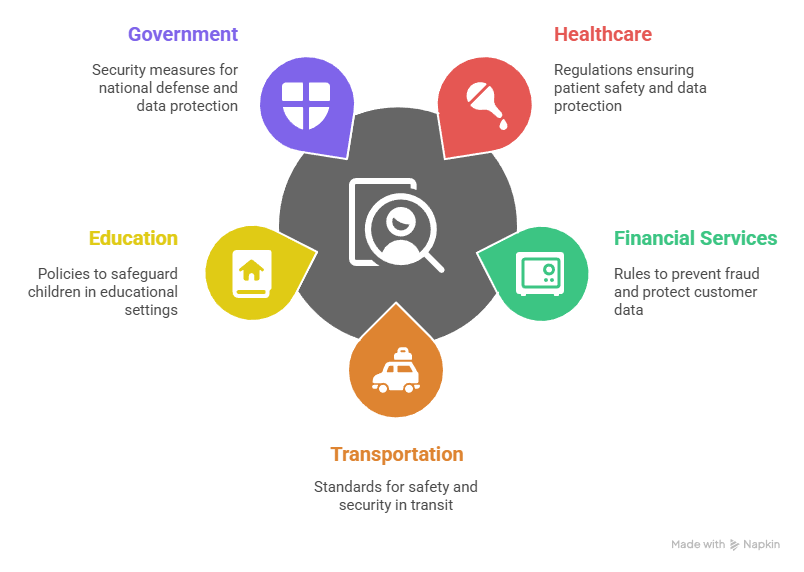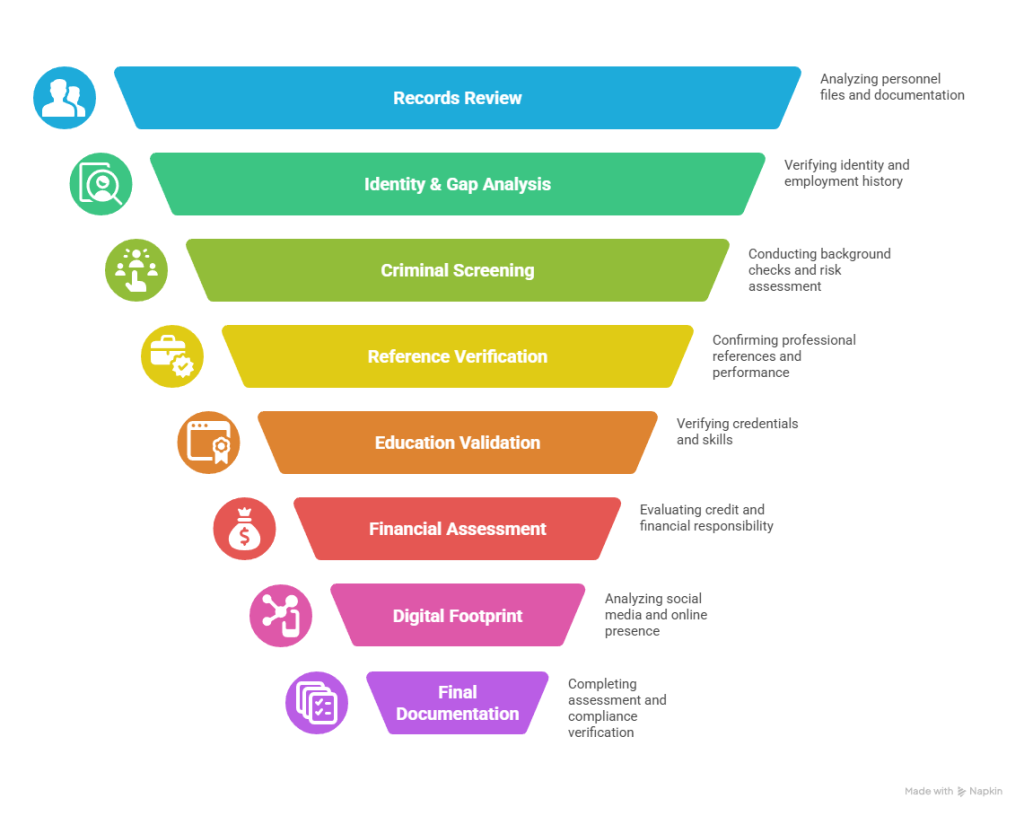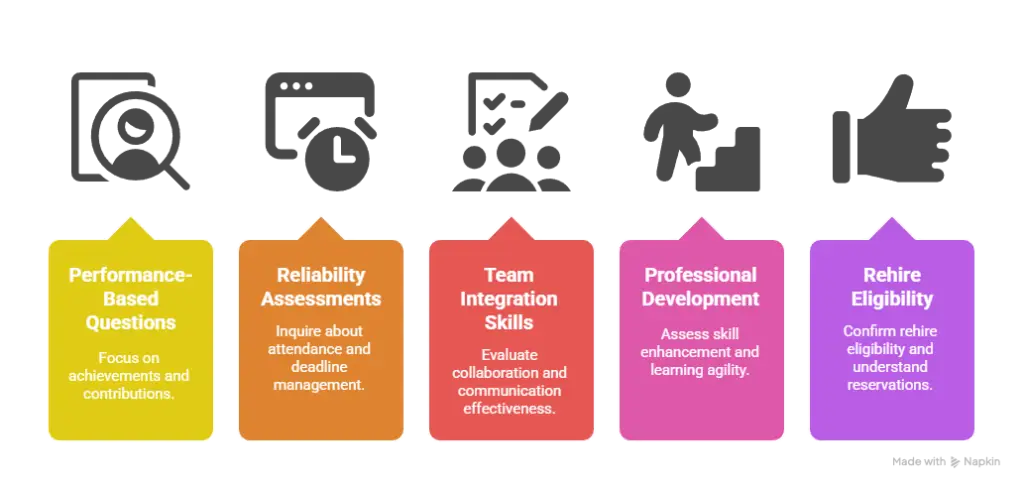Screening returning employees requires a systematic approach that balances compliance requirements with relationship preservation, as 28% of workers now return to previous employers within two years. This comprehensive framework ensures thorough vetting while maintaining positive candidate experience for boomerang employees.
Key Takeaways
- Returning employee background checks must treat former workers as new hires to ensure current compliance and risk mitigation standards are met.
- The 8-step screening framework includes identity verification, employment gap analysis, criminal background updates, and reference validation to create comprehensive risk assessment.
- Legal compliance requires following FCRA guidelines, equal opportunity standards, and state-specific rehire regulations when implementing employee rescreening procedures.
- Documentation preservation and systematic record-keeping prevent compliance violations while streamlining the returning worker background verification process.
- Boomerang employees offer 40% faster onboarding and 25% better retention rates, making thorough but efficient screening processes essential for competitive advantage.
- Technology integration and automated screening workflows reduce processing time by 60% while maintaining thoroughness in former employee verification steps.
Understanding the Returning Employee Screening Landscape
The modern workforce has embraced the "boomerang employee" phenomenon. LinkedIn reports that rehires now account for 4.5% of all new hires in 2024. These returning workers bring institutional knowledge and proven cultural fit. However, they also present unique screening challenges that require specialized approaches. Traditional background check processes often overlook the specific considerations needed for employees who've previously worked within your organization. The familiarity factor can create blind spots that expose organizations to unnecessary risks.
Effective screening of returning employees demands a balance between leveraging existing knowledge and treating each candidate with fresh scrutiny. The landscape has evolved significantly since many employees left their previous positions. New compliance requirements, enhanced background check technologies, and changing legal standards create additional complexity. Companies that fail to implement proper rehire screening best practices expose themselves to increased liability. Compliance violations and potential workplace safety issues become more likely without systematic approaches. Organizations must adapt their screening procedures to address both familiar candidates and evolving regulatory requirements.
Legal Framework and Compliance Requirements
Federal and state regulations create a complex compliance environment for returning employee background checks. Many organizations struggle to navigate these requirements effectively. The Fair Credit Reporting Act applies equally to all candidates regardless of previous employment history. State-specific legislation adds additional layers of complexity that change frequently. Understanding these requirements prevents costly violations and ensures consistent application of screening standards across all candidate types.
- FCRA Compliance Standards: Written consent and disclosure requirements apply to all background checks, including returning employees who previously completed screening processes.
- Ban-the-Box Legislation: Twelve states now restrict timing and scope of criminal history inquiries, affecting how employers can evaluate returning workers with criminal records.
- Equal Employment Opportunity Rules: Consistent screening standards must apply regardless of candidate familiarity to prevent discrimination claims and compliance violations.
- State Privacy Laws: Enhanced data protection requirements in California, Virginia, and other states impact how background check information can be collected and stored.
- Industry-Specific Regulations: Healthcare, financial services, and transportation sectors have additional screening requirements that may have changed since employee departure.
This regulatory landscape requires ongoing monitoring to ensure compliance with evolving legal standards. Organizations must update their screening procedures regularly to reflect current requirements. Maintaining defensible hiring practices becomes increasingly complex as regulations evolve at different speeds across various jurisdictions.
Industries with Mandatory Returning Employee Screening Requirements
Certain industries face heightened regulatory requirements that mandate comprehensive screening of all employees, including returning workers, due to safety-critical operations and regulatory oversight. These sectors cannot rely on previous screening results regardless of timing, as regulatory bodies require current verification to maintain operating licenses and compliance status. Federal and state agencies actively audit these industries to ensure screening procedures meet current standards for all personnel decisions.

- Healthcare and Medical Services: Joint Commission and CMS requirements mandate current background checks for all clinical staff, including returning nurses, physicians, and technicians accessing patient information.
- Financial Services and Banking: FDIC, OCC, and FINRA regulations require updated screening for positions involving money handling, customer data access, or investment advisory services.
- Transportation and Logistics: DOT regulations mandate current background verification for commercial drivers, pilots, and personnel with access to secure transportation facilities.
- Education and Childcare: State licensing boards require updated background checks for teachers, administrators, and support staff working with minors in educational settings.
- Government and Defense Contractors: Security clearance requirements necessitate current screening regardless of previous clearance status or employment history with the organization.
These industries face severe penalties for non-compliance, including license revocation, contract termination, and regulatory sanctions that can threaten business operations. The cost of comprehensive screening represents minimal investment compared to potential regulatory consequences and liability exposure from inadequate verification procedures.
The Importance of Treating Returning Employees as New Hires
Treating returning employees as completely new applicants represents the safest legal approach and most effective risk management strategy for organizations. This approach ensures compliance with all current regulations while preventing claims of preferential treatment or discrimination against other candidates. The time gap between departure and return can involve significant changes in an individual's circumstances, criminal history, financial situation, and professional qualifications that previous screening may not have captured. Legal precedent strongly supports treating all applicants equally regardless of previous employment history, making this approach both legally sound and operationally consistent with established hiring practices throughout the organization.
The 8-Step Framework for Screening Returning Employees
Implementing a systematic approach to returning employee screening ensures thorough evaluation while maintaining efficiency and compliance. This framework addresses the unique challenges of evaluating candidates with previous organizational history. Each step builds upon previous assessments to create comprehensive risk evaluation. The systematic nature prevents important steps from being overlooked due to candidate familiarity.

Step 1 - Personnel Records Review and Documentation Assessment
Begin by conducting a comprehensive review of the employee's previous personnel file, including performance evaluations, disciplinary actions, departure circumstances, and any unresolved issues. Document gaps in previous screening procedures and compliance requirements that have changed since their departure. Create a screening checklist that addresses both standard requirements and organization-specific considerations, noting positive aspects of their previous employment and any concerns that might affect rehire decisions while identifying new compliance requirements or organizational policies implemented since their previous tenure.
Step 2 - Identity Verification and Employment Gap Analysis
Verify the returning employee's current identity documentation using the same standards applied to all new hires, regardless of previous familiarity with the individual. Conduct thorough employment gap analysis for the entire period since their departure, including verification of claimed positions, educational pursuits, volunteer work, or periods of unemployment. This step reveals potential concerns about activities during their absence while ensuring accurate identity confirmation that meets current security standards and maintains consistent evaluation standards across all applicants.
Step 3 - Updated Criminal Background Screening
Conduct comprehensive criminal background checks covering the entire period since the employee's departure from your organization. Criminal history can change significantly over time, making updated screening essential for informed hiring decisions. Previous clean results provide no guarantee of continued clean records during their absence from your organization.
- County-Level Criminal Searches: Local courthouse records provide the most current and detailed information about recent criminal activity in areas where the candidate has lived or worked. These searches often reveal cases that may not yet appear in state or national databases due to reporting delays. County-level searches represent the most thorough approach to identifying recent criminal history that could impact hiring decisions.
- State Criminal Database Searches: Statewide repositories aggregate criminal records from multiple jurisdictions and provide broader coverage of an individual's criminal history. These databases often include records from rural counties that might not be captured in targeted county searches. State searches serve as an important complement to county-level investigations for comprehensive coverage.
- Federal Criminal Record Checks: Federal databases capture crimes prosecuted at the federal level, including white-collar crimes, immigration violations, and interstate criminal activity. These records are particularly important for positions involving financial responsibility, government contracts, or interstate commerce. Federal searches help identify serious criminal activity that might not appear in local or state databases.
The screening scope should match or exceed current organizational standards rather than relying on less comprehensive checks from their previous tenure. Enhanced screening may be appropriate for positions with increased responsibility or access to sensitive information that didn't exist during their previous employment.
Step 4 - Reference Verification and Professional History
Contact references and verify employment history for positions held since the employee's departure, focusing on performance assessments, reliability, teamwork skills, and professional development during their time away. Structure conversations around specific achievements, measurable outcomes, and job-relevant capabilities while documenting all reference interactions thoroughly. This verification helps assess whether the returning employee has maintained or enhanced their qualifications and professional standards during their absence from your organization.
Step 5 - Education and Certification Validation
Verify any new educational achievements, professional certifications, or specialized training completed since their departure to ensure claimed credentials are legitimate and applicable to their returning role. Many returning employees use their time away to enhance qualifications through formal education, professional development programs, or industry certifications that could significantly impact job qualifications and compensation levels. Include verification of both formal degree programs and professional development activities that affect their potential contributions and role placement.
Step 6 - Financial Assessment and Credit Evaluation
For positions involving monetary responsibility, access to financial systems, or fiduciary duties, conduct updated credit checks and financial background screening since credit history can change dramatically during employment gaps. This assessment should align with current position requirements and organizational risk tolerance levels while complying with FCRA requirements and state-specific credit check regulations. Financial circumstances may create new risks that weren't present during their original employment period.
Step 7 - Digital Footprint and Social Media Review
Review publicly available social media and online presence to identify potential concerns about judgment, professionalism, or alignment with organizational values while focusing on job-relevant information and avoiding protected characteristics. This review helps identify reputational risks or behavioral concerns that might impact workplace dynamics and provides insights into the candidate's public persona and professional representation during their absence from your organization.
Step 8 - Final Documentation and Decision Framework
Compile all screening results into a comprehensive assessment that weighs both historical knowledge and current findings, clearly articulating the decision-making process and demonstrating compliance with all applicable regulations. Create complete documentation that covers all screening activities, decision rationales, compliance checkpoints, and evaluation criteria used throughout the process to support legal defense, regulatory compliance, and future hiring decisions while treating returning employees fairly and consistently.
Technology Integration for Efficient Screening
Modern screening technology streamlines the returning worker background verification process while maintaining thoroughness and compliance. Automated platforms reduce processing time significantly while ensuring comprehensive coverage of all screening components. Integration with existing HR systems creates seamless workflows that preserve employee data while updating information through current verification procedures. These systems can automatically flag changes since previous screening, reducing manual review time.
- Automated compliance monitoring and alerts
- Integrated applicant tracking system compatibility
- Customizable screening packages for returning employees
- Real-time status updates and progress tracking
- Comprehensive audit trail documentation
- Mobile-friendly interfaces for remote processing
Technology solutions provide measurable returns through improved efficiency and reduced manual processing requirements. Organizations report 60% faster screening completion times while maintaining screening quality and compliance standards. The investment in proper screening technology typically pays for itself within six months through reduced administrative costs and improved hiring speed.
Reference Verification and Employment History Validation
Professional reference verification represents a critical component of returning employee screening that many organizations underestimate or skip entirely. Recent employers, supervisors, and colleagues provide valuable insights into professional development, work habits, and potential concerns that developed during the candidate's absence. This verification process helps assess whether the returning employee has maintained or enhanced their qualifications and professional standards during their time away from your organization.
| Reference Type | Primary Value |
| Direct Supervisors | Performance assessment, work quality evaluation |
| HR Representatives | Employment dates, eligibility for rehire, policy violations |
| Professional Colleagues | Teamwork skills, technical competence, workplace behavior |
| Client References | Customer service quality, external relationship management |
| Industry Contacts | Professional reputation, skill development, market standing |
Reference verification should follow the same systematic approach used for external candidates while leveraging appropriate institutional knowledge. The process must maintain consistency in evaluation criteria while gathering insights specific to their professional development during their absence from your organization.
Best Practices for Reference Interviews
Structure reference conversations to gather specific information about job-relevant skills, performance consistency, and professional growth during their employment elsewhere. Focus questions on measurable outcomes and specific examples rather than general impressions or personality assessments. This approach provides actionable insights that support informed hiring decisions while maintaining legal compliance with reference check regulations.

- Performance-Based Questions: Focus on specific achievements, project outcomes, and measurable contributions that demonstrate professional capabilities and work quality.
- Reliability Assessments: Inquire about attendance, deadline management, and consistency in work quality to assess dependability and professional habits.
- Team Integration Skills: Evaluate collaboration abilities, communication effectiveness, and leadership potential based on specific workplace interactions and team projects.
- Professional Development: Assess skill enhancement, learning agility, and adaptability based on their response to new challenges and changing workplace requirements.
- Rehire Eligibility: Confirm whether the reference source would rehire the candidate and understand any reservations or concerns about their performance or behavior.
Document all reference conversations thoroughly to support hiring decisions and demonstrate due diligence in the evaluation process. Consistent documentation practices protect the organization legally while providing valuable insights for onboarding and performance management planning.
Financial and Educational Verification Requirements
Financial background screening becomes necessary for positions involving monetary responsibility, access to financial systems, or fiduciary duties that may not have existed during the employee's previous tenure. Credit history can change dramatically during employment gaps, potentially creating new risks that weren't present during their original employment period. This assessment should align with current position requirements and organizational risk tolerance levels while complying with FCRA requirements and state-specific credit check regulations.
Educational verification ensures that claimed degree completions, professional certifications, or specialized training obtained during their absence are legitimate and applicable to their returning role. Many returning employees use their time away to enhance qualifications through formal education, professional development programs, or industry certifications that could significantly impact their job qualifications and compensation levels. Verification should include both formal degree programs and professional development activities that affect their potential contributions and role placement within the organization.
Common Mistakes and Risk Mitigation Strategies
Organizations frequently make critical errors when screening returning employees that expose them to legal liability and increased operational risks. The familiarity factor often leads to relaxed standards or abbreviated processes that violate compliance requirements. Understanding these common pitfalls helps organizations develop screening procedures that protect both legal interests and hiring effectiveness while maintaining positive relationships with returning candidates.
- Relying on Outdated Background Checks: Assuming previous screening results remain valid violates FCRA requirements and creates significant liability exposure for organizations. Criminal history, financial circumstances, and professional qualifications can change dramatically over short periods, making updated verification essential. This mistake represents the most common compliance violation in returning employee screening processes.
- Inconsistent Application of Standards: Applying different screening criteria to returning employees compared to external candidates creates discrimination risks and undermines program effectiveness. Consistency in screening procedures demonstrates fair treatment and supports defensible hiring decisions that can withstand legal challenges. Variations based on candidate familiarity often result in compliance violations and discrimination claims.
- Inadequate Documentation Practices: Failing to document screening decisions and rationale properly creates legal vulnerabilities and makes it difficult to defend hiring practices during audits or investigations. Comprehensive documentation should cover all screening activities, decision-making criteria, and compliance checkpoints throughout the evaluation process. Poor documentation practices represent a significant risk factor for organizations facing employment-related litigation.
Effective risk mitigation requires standardized procedures applied consistently regardless of candidate familiarity or previous employment history. Organizations must treat returning employees with the same rigor applied to external candidates while leveraging appropriate institutional knowledge to inform decision-making processes effectively.
Building Comprehensive Documentation Systems
Systematic documentation practices ensure compliance while creating valuable insights for future hiring decisions and organizational learning opportunities. The employee rehire documentation system should capture all screening activities, decision rationales, compliance checkpoints, and evaluation criteria used throughout the process to create complete records that support legal defense and process improvement initiatives. This documentation serves multiple purposes including legal protection, regulatory compliance demonstration, process optimization, and organizational knowledge preservation that benefits future hiring decisions. Effective systems integrate with existing HR information platforms while providing specialized functionality for returning employee scenarios, including automated compliance tracking, secure storage solutions, and audit trail generation that maintains confidentiality while ensuring accessibility for authorized personnel and regulatory bodies.
Measuring ROI and Program Effectiveness
Comprehensive screening of returning employees delivers measurable returns through multiple organizational benefits that justify the investment in thorough evaluation processes. Organizations report significant improvements in retention rates, productivity metrics, and compliance standings when implementing systematic screening approaches. The financial benefits extend beyond direct cost savings to include risk mitigation value and improved stakeholder confidence. Tracking these metrics helps demonstrate program value and identify optimization opportunities.
- 25% improvement in retention rates compared to inadequately screened rehires
- 40% faster productivity ramp-up versus external new hires
- 60% reduction in screening processing time through technology integration
- $3 financial return for every $1 invested within first year of implementation
- 45% decrease in compliance-related incidents and violations
- 30% improvement in hiring manager satisfaction with candidate quality
Return on investment calculations should include both direct financial benefits and risk mitigation value that protects organizational interests. The cost of comprehensive screening represents a small fraction of potential liability exposure from inadequate vetting procedures. Additionally, thorough screening demonstrates due diligence to stakeholders, insurance providers, and regulatory bodies, potentially reducing premium costs and regulatory scrutiny that affect long-term operational expenses.
Conclusion
Screening returning employees requires a sophisticated approach that balances institutional knowledge with current compliance requirements and comprehensive risk assessment strategies. The 8-step framework provides systematic methodology for conducting thorough yet efficient screening processes that protect organizations while preserving positive candidate relationships. Proper implementation delivers measurable returns through improved retention rates, reduced compliance risks, and enhanced workplace safety. Success depends on consistent application of current standards, technology integration, and documentation practices that demonstrate due diligence while facilitating informed hiring decisions.
Frequently Asked Questions
Should returning employees go through the same background check process as new hires?
Yes, returning employees must undergo the same comprehensive background check process as new hires. FCRA regulations require treating all applicants equally, regardless of previous employment history with your organization.
Can I skip certain screening steps for employees who left recently?
No, you cannot skip any required screening steps regardless of how recently the employee left. All screening components must be completed to ensure compliance and proper risk assessment for returning workers.
What happens if a returning employee's background check reveals new issues?
Treat new negative information the same way you would for external candidates, following your standard adverse action procedures. Previous good standing doesn't override current screening standards or risk assessment protocols.
Are there legal risks to screening returning employees differently?
Yes, applying different screening standards to returning employees creates discrimination risks and compliance violations. Consistent application of screening procedures across all candidates protects against legal challenges.
How long does the returning employee screening process typically take?
The screening timeline matches that of new hire processes, typically 3-10 business days depending on screening components required. Technology integration can reduce processing time while maintaining thoroughness.
Do I need to provide FCRA disclosures to employees who received them before?
Yes, all FCRA disclosure and consent requirements apply equally to returning employees. You must provide fresh written consent forms and disclosure statements for each new screening process.
Additional Resources
- FCRA Compliance Guide for HR Professionals
https://www.ftc.gov/business-guidance/resources/fair-credit-reporting-act - State-by-State Background Check Legal Requirements
https://www.napbs.com/state-law-summaries - EEOC Guidelines on Background Check Compliance
https://www.eeoc.gov/newsroom/eeoc-enforcement-guidance-consideration-arrest-and-conviction-records-employment - Professional Background Screening Association Resources
https://www.napbs.com/resource-center - Department of Labor Hiring Best Practices
https://www.dol.gov/general/jobs/background-checks
Still have questions?
Get in touch with our team today for a personalized demo and discover how our tailored volume pricing and packages can drive results for your business!
How useful was this page?*
Note: your comments are anonymous. We use them to improve the website. Do not include any personal details.
Visit our FCRA Compliance Tool or leave a message here if you need a response.
From the blog Explore the GCheck Content Hub

Employment Verification Compliance 2026: Strategic Guide for Modern HR Teams
29 Dec, 2025 • 17 min read
What Shows Up on an Employment Background Check in 2026: A Complete Compliance Guide
29 Dec, 2025 • 20 min read
How to Run a FACIS Background Check: Complete Guide for Healthcare Compliance
18 Dec, 2025 • 20 min readThe information provided in this article is for general informational and educational purposes only and should not be construed as legal advice or a substitute for consultation with qualified legal counsel. While we strive to ensure accuracy, employment screening laws and regulations—including but not limited to the Fair Credit Reporting Act (FCRA), Equal Employment Opportunity Commission (EEOC) guidelines, state and local ban-the-box laws, industry-specific requirements, and other applicable federal, state, and local statutes—are subject to frequent changes, varying interpretations, and jurisdiction-specific applications that may affect their implementation in your organization. Employers and screening decision-makers are solely responsible for ensuring their background check policies, procedures, and practices comply with all applicable laws and regulations relevant to their specific industry, location, and circumstances. We strongly recommend consulting with qualified employment law attorneys and compliance professionals before making hiring, tenant screening, or other decisions based on background check information.

